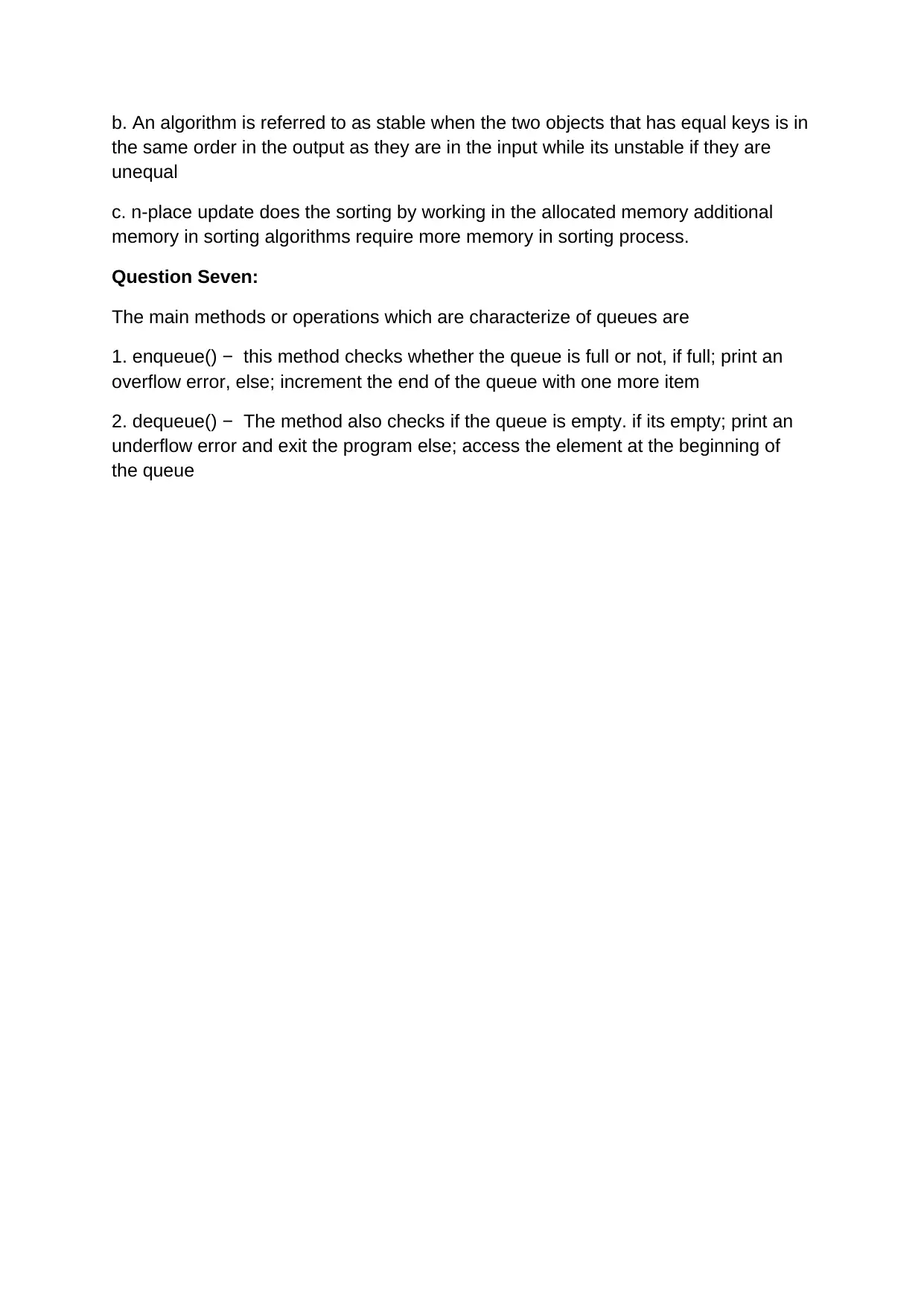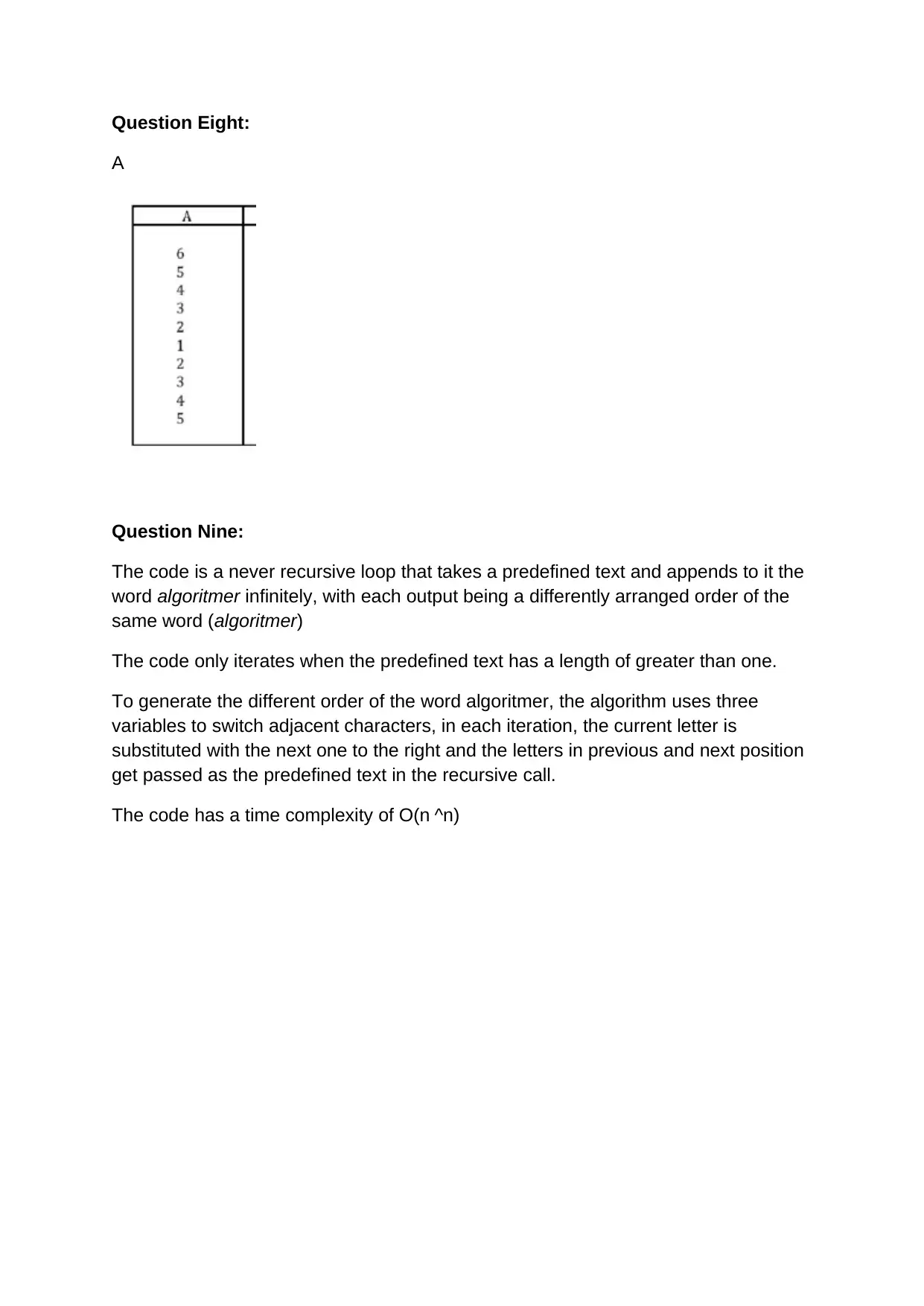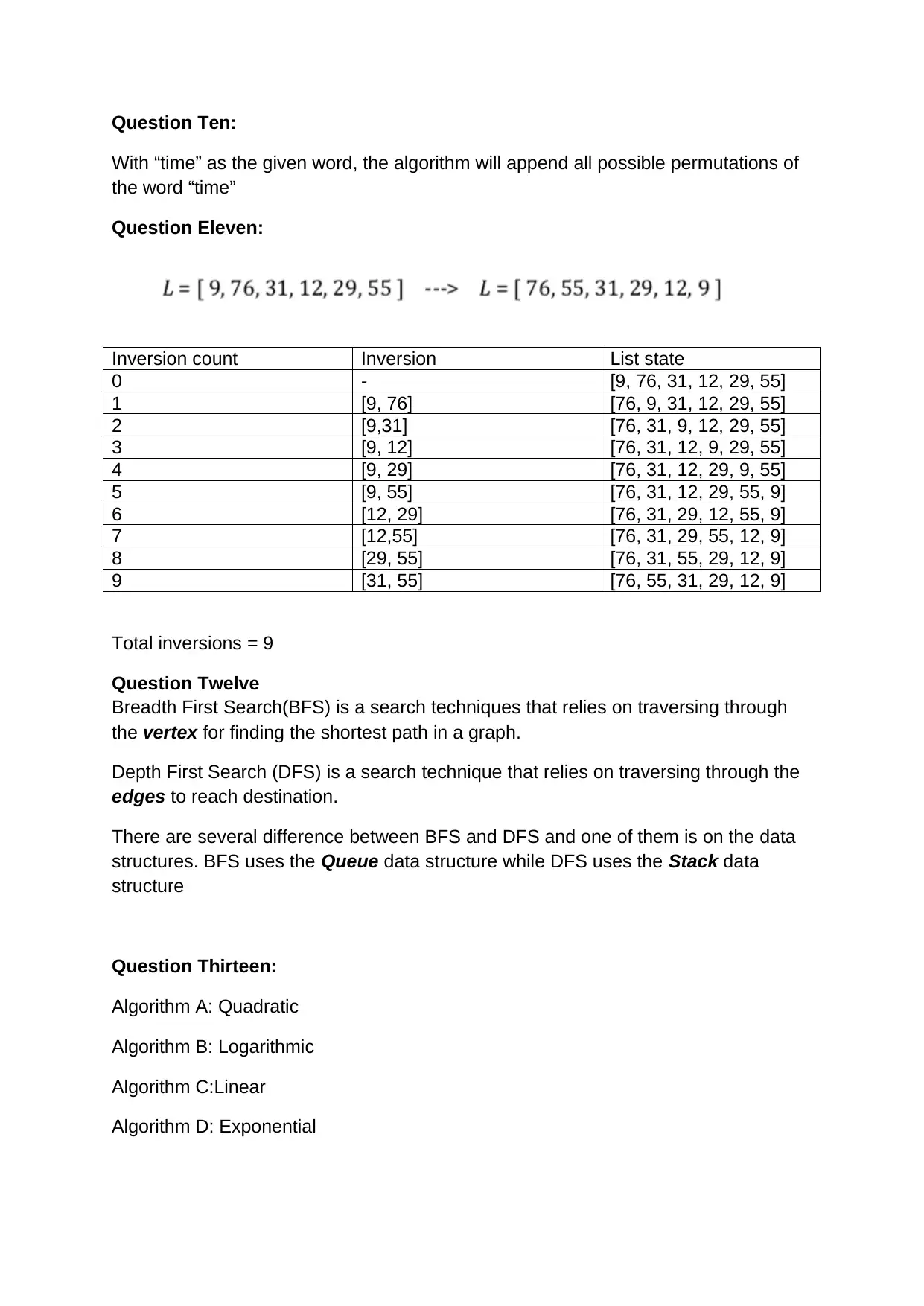Analysis of Algorithms and Data Structures Assignment
VerifiedAdded on 2022/08/21
|4
|869
|15
Homework Assignment
AI Summary
This assignment solution addresses various concepts in data structures and algorithms. It begins by analyzing a sorting algorithm's functionality, identifying it as a descending-order sorting method, and discussing its time complexity. The solution then defines the impact of iterations and data size on algorithm performance. It explores topological sorting, time complexities of different methods, and distinctions between internal and external sorting, as well as stable and in-place sorting. The characteristics of queue operations (enqueue and dequeue) are outlined. The assignment also analyzes a code snippet involving permutations, calculates inversion counts in a list, and differentiates between Breadth-First Search (BFS) and Depth-First Search (DFS) algorithms. Finally, it classifies the time complexities of different algorithms (quadratic, logarithmic, linear, and exponential).
1 out of 4







![[object Object]](/_next/static/media/star-bottom.7253800d.svg)